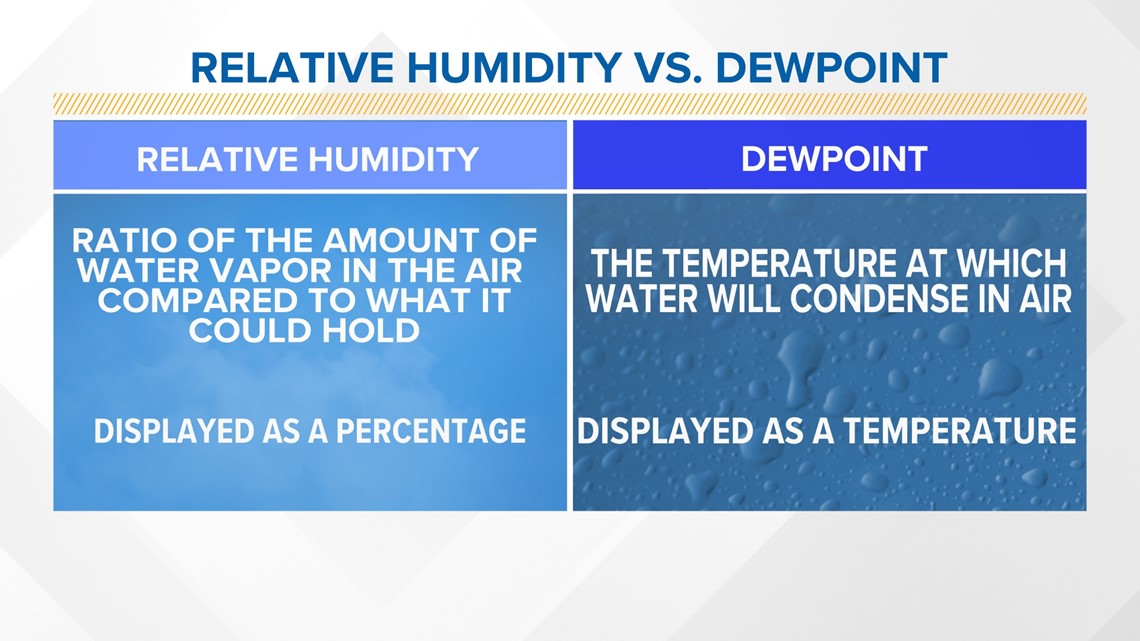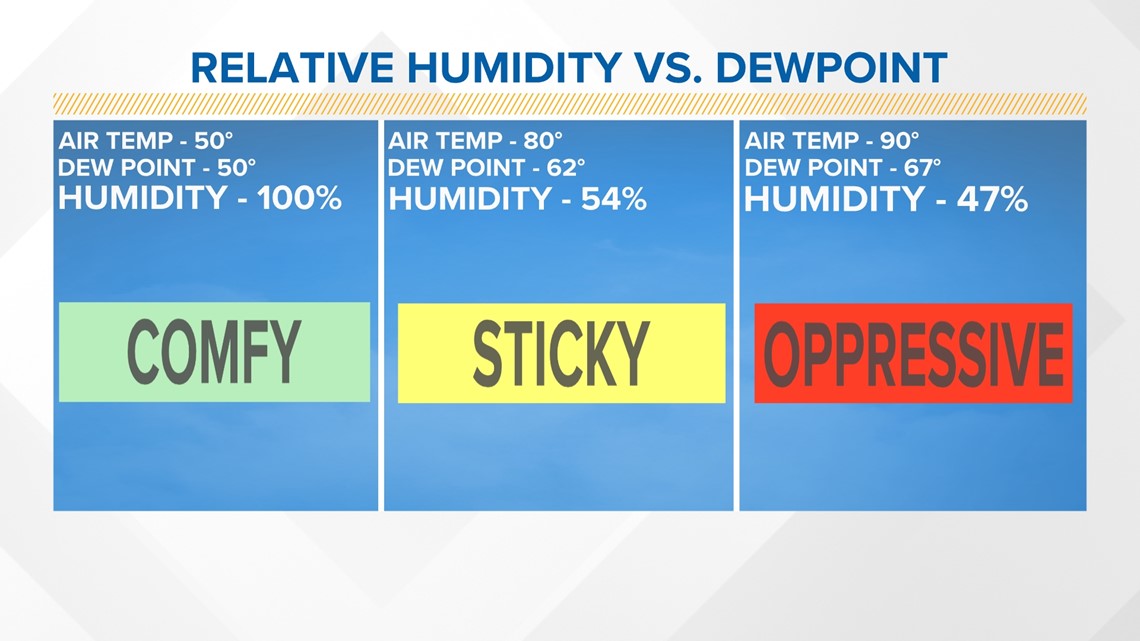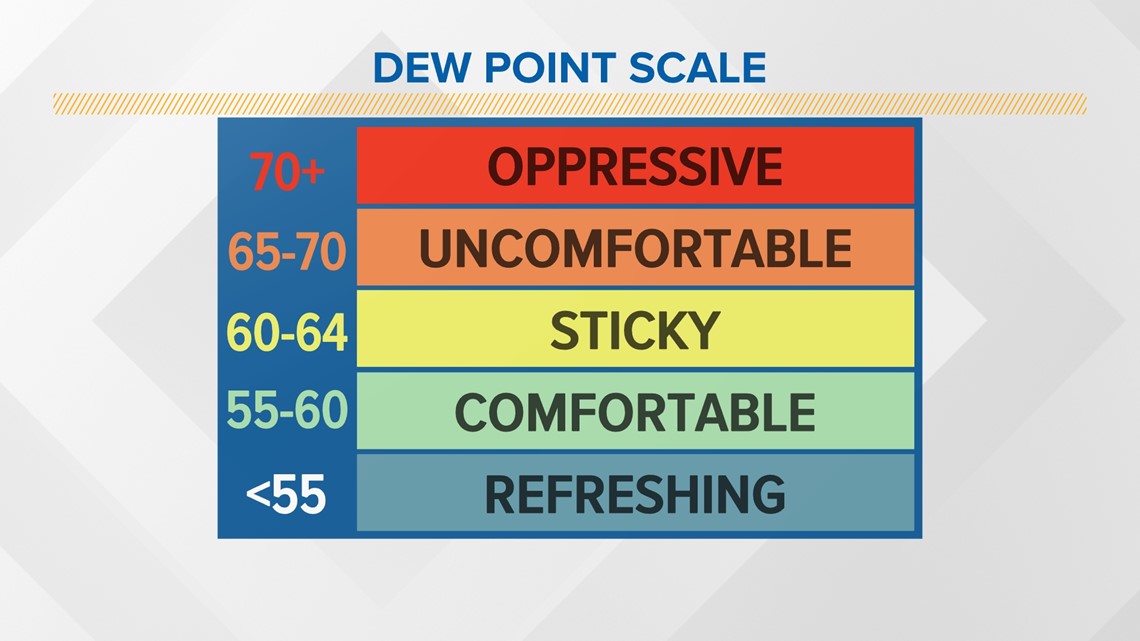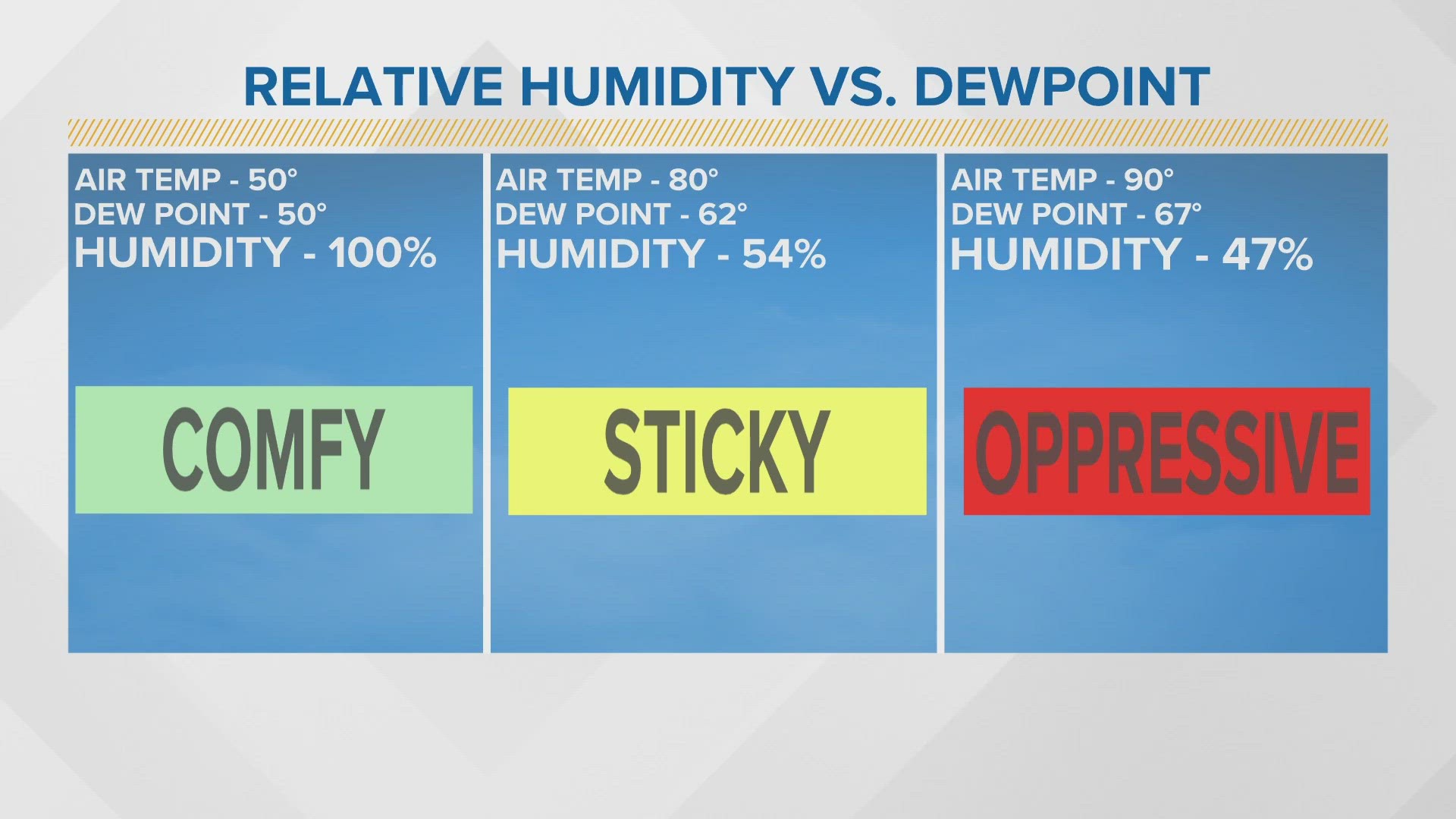MAINE, USA — In the summer, humidity is one part of the forecast that can make or break your day. Most of us can agree that a hot and humid day is not as nice as a dry, less humid day. Right about now, you hear us meteorologists talking about the dewpoints when we refer to the humidity...so what is it?
Starting off with humidity, there are a few types, but we are normally talking about relative humidity. Relative humidity (RH) is the ratio of the amount of water vapor in the air compared to what it could hold at that temperature. The key is that RH is temperature dependent. This number is expressed as a percentage.
Dewpoint is the temperature at which water will condense in the air. This number is displayed as a temperature.


So what does that all mean?
It means that dewpoint is a much more accurate way of describing how "humid" the day is going to feel. Here are a few examples:


A day with an air temperature and dewpoint that are both 50 degrees is going to be a comfortable day, yet the humidity will be 100%? That doesn't seem right.
As temperatures warm up and the dewpoint increases, it will get more sticky, more oppressive, and frankly more humid...but yet the humidity is decreasing?
This is because humidity is temperature dependent, meaning that the percentage will change alongside the temperature itself.
Dewpoints are a better measure for humidity and will tell you how the day will actually feel. These are not temperature dependent, so a dewpoint of 50 degrees will seem refreshing whether the temperature outside is 65 degrees or 90 degrees.


A dewpoint below 60 degrees means it will be comfortable or refreshing. The further north of 60 we get, the more sticky and uncomfortable we will be.
To wrap this all up, dewpoint will better describe how humid it will actually be. And don't worry, most apps on your phone show the dewpoint as well.

